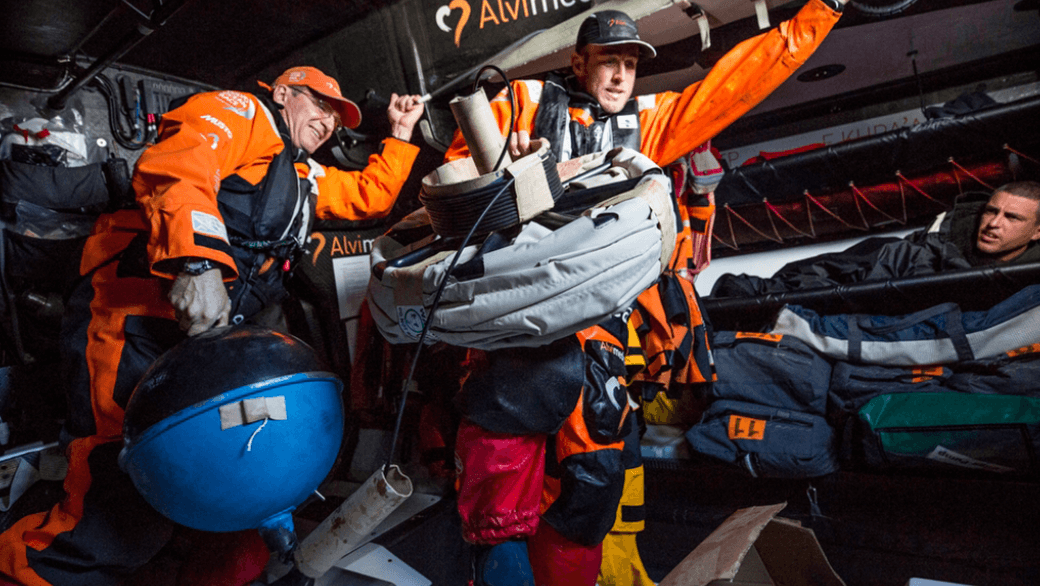If you’ve ever sailed aboard a ship in the coastal ocean, or checked a weather report before going to the beach, then you are one of many millions of people who benefit from ocean observations. NOAA collects ocean observations and weather data to provide mariners with accurate forecasts of seas, as well as coastal forecasts and even regional climate predictions. It takes a lot of effort to maintain observations in all of the ocean basins to support these forecasts, and NOAA certainly can’t do it alone. Partnerships are essential to maintaining a network of free-floating buoys, known as drifters, and NOAA’s latest partner is not your typical research or ocean transportation vessel: the six sailboats and crew currently racing around the world in the Volvo Ocean Race.
As one of the world’s major global sailing races, the Volvo Ocean Race greatly depends on accurate predictions of ocean currents and marine weather. All six of the Volvo Ocean Race teams will each deploy a drifter, a free-floating sensor that measures surface pressure and ocean currents and transmits the information by satellite to NOAA, during the fifth leg of the race, in the Southern Ocean – a region oceanographers don’t get to visit regularly, but one that is important to observe.
Sailors from Team Alvimedica deploy a drifter in the Southern Ocean.
Image credit: Amory Ross/Volvo Ocean Race
Deployment site for drifters on Volvo Ocean Race 2014-2015 Route Map. Image Credit: Volvo Ocean Race and NOAA/AOML
Update from the Southern Ocean:
On March 20th, despite less than ideal conditions, sailors aboard the six sailing vessels successfully deployed drifters at target locations in the Southern Ocean.
Will Oxley, Team Alvimedica’s navigator, was excited to participate in the drifter deployment. Aside from being a top offshore sailor, Oxley is a marine biologist who recognizes the importance of data collection in the Southern Ocean.
“It’s believed the Southern Ocean absorbs up to about 60 percent of the heat and carbon dioxide produced by humans,” he explains. “So the Southern Ocean is a very important ‘sink’ that is absorbing carbon dioxide and slowing the pace of global warming.”
NOAA scientists will soon be receiving critical real-time data from some of the most remote waters on the planet. Access the drifter data online by clicking on the thumbnail.
Originally Published March 2015 by Shannon Jones
